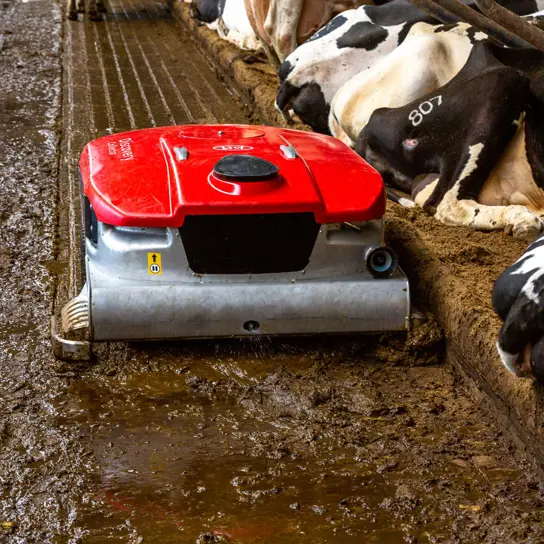Lely Center Holsworthy

Introduction
Your Milking and Feeding Robotic Specialists in Devon & Cornwall
At Lely Center Holsworthy, Farming Innovation is at the heart of everything we do. Our focus is delivering the most cost effective, efficient milking and barn solutions for our customer's to increase their productivity and profitability.
Lely Center Holsworthy has been established since 2008, and we are one of the pioneers in Lely robotic milking, feeding and barn products in the UK. The Center has evolved over time to provide a complete design, sales, service and back up operation second to none, helping our customers achieve higher productivity and effectiveness on their farm.
With our Head Office in Holsworthy, we have a team of certified service technicians located throughout the Devon & Cornwall region which ensures a quick response time 365 days a year; they all have the same goal – to maintain each robot to the highest standard and keep failures to a minimum and to keep customer satisfaction high.
For any enquiries please contact us on: 01409 413122 or info-hol@lelycenter.com where a member of our team will be happy to assist you.
Promotion
Apply for the Farming Equipment & Technology Fund (FETF) 2025

solutions
Featured products
Our Center Departments & The Services We Offer
We provide the necessary tools to help you unlock your dairy farm’s full potential. From Sales to Project Coordination, Technical Service Support, Farm Management Support, Business Support, and sales of Consumables and Pre-owned stock.
Promotion
DISCOUNTS on bulk chemical & consumable orders
Chemicals & consumables can be picked up from our Holsworthy depot during working hours Monday to Friday, 8am – 5pm or ordered direct on 01409 413122 (option 2) for farm delivery.
Please contact us to discuss special collection or delivery deals.
• Orders over £1000 are eligible for 6% discount and orders over £2500 are eligible for 10% discount
• Chemicals and consumables which are collected from the store are now eligible for a 6% discount
• We also offer the option to pay for bulk orders by Direct Debit
• Buy a 12-month supply and pay for it over a 6-month period. OR
• Buy a 6-month supply and repay over a 3-month period

Events
7 Aug
07:00 – 17:00
Honiton Show
We welcome customers, old and new, to our stand at the Honiton Show. Join us for food and drink and a catch-up with our engineering and sales teams.28 Aug
06:00 – 17:00
Holsworthy & Stratton Agricultural Show
We look forward to welcoming you to our stand at the Holsworthy Show. Join us for food and drink and a catch-up with our teams.
Latest news
Lely Center Holsworthy
We are available on workdays from:
Open Monday to Friday 8am - 5pm. Saturday & Sunday closed. We are closed on all national holidays.
How can we help you?
If you have any questions about our services, maintenance, support or solutions, don’t hesitate to get in touch! Our advisors are happy to provide skilled support and guidance for your farm optimisation process.


















